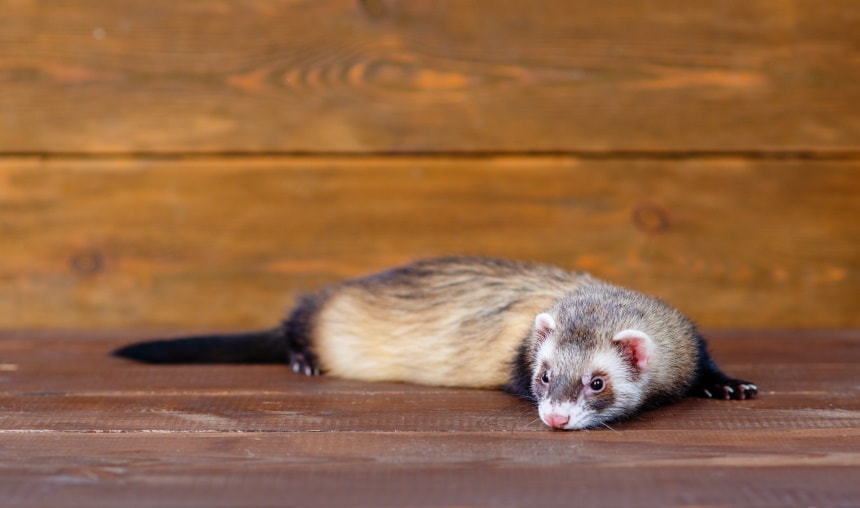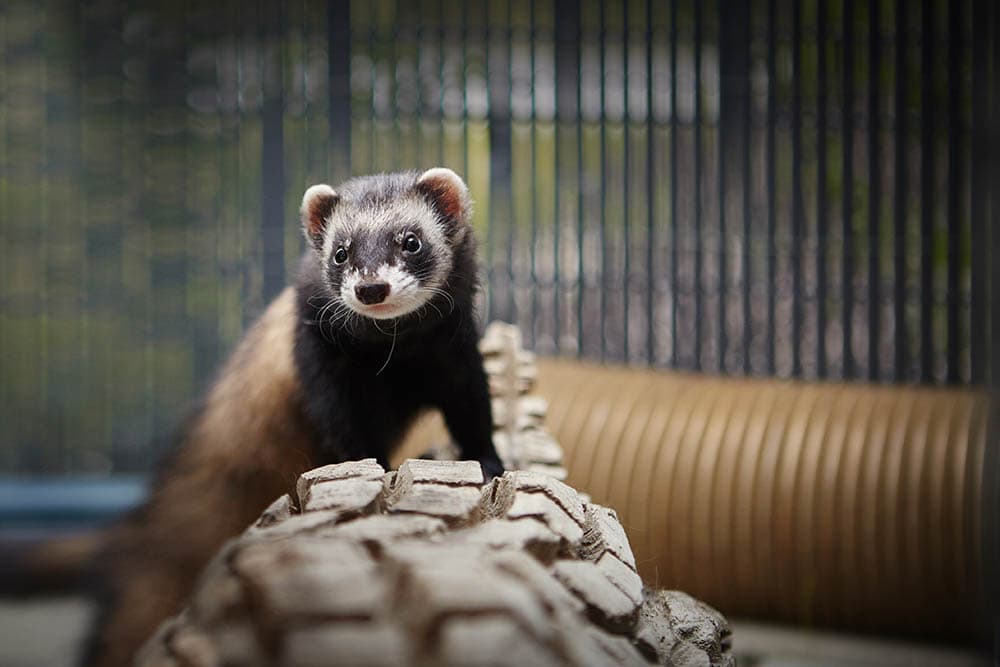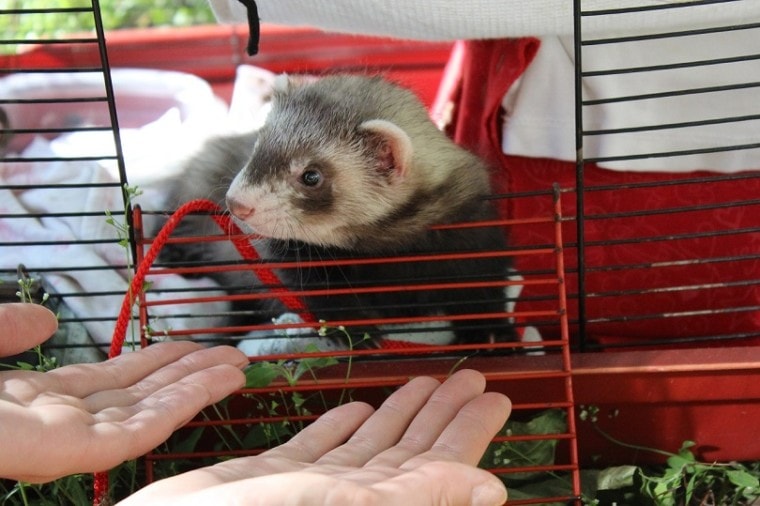
Ferrets are lively, inquisitive, and fun little pets. They are also very good at escaping, exceptional at chewing, and they can squeeze through surprisingly small gaps. This means that the best ferret cage is one that gives them plenty of room to move about, both horizontally and vertically, an opportunity to play and run around, and that keeps them securely under lock and key until you decide it is time to let them out.
Unfortunately, a ferret habitat of a decent size can cost a lot of money, while the more affordable ones tend to be devoid of excitement and lacking in space. Below, you can find guides and DIY ferret cage plans to help you create your own ferret abode.
The 8 DIY Ferret Cage Plans
1. DIY Ferret Bookshelf Cage by Fluffyplanet
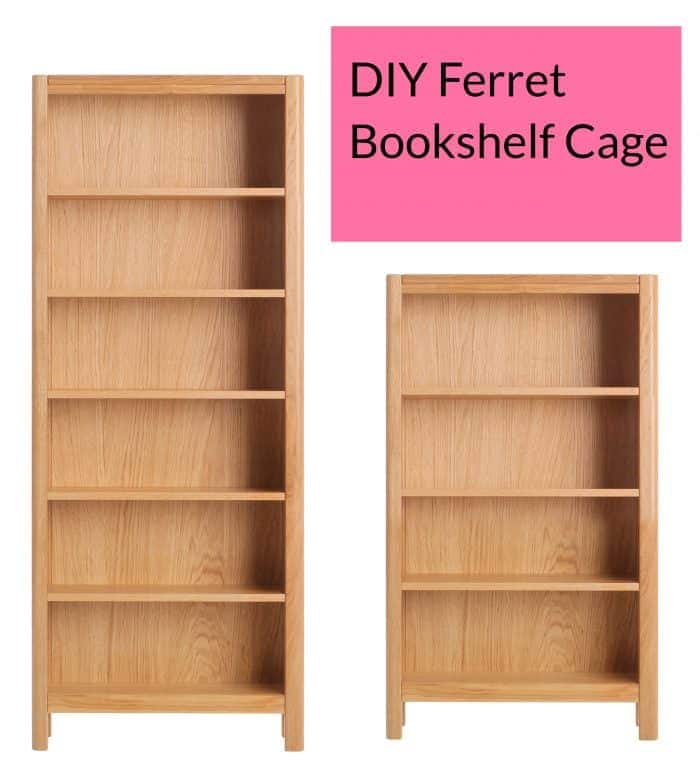
Ferrets love bookshelves and bookcases because they enjoy climbing up them. You do need to take care if your ferret does like to ascend bookshelves, however, because they aren’t as skilled at climbing back down and their lack of a sense of fear means that they will usually just jump to a lower surface. With a modified bookshelf, you have several layers of home, and you can add stairs or holes between the layers, while also placing a secure cover over the front of the unit. You will need to find somewhere else to store your books, though.
2. Ratty Cage—Storage Cube Ferret House by Ikeahackers

This design uses a 2×4 storage shelf from IKEA, but almost any storage cube shelf will do the trick. Drill large holes through the interior middle panel so that your ferret can explore their rooms. After that, all you’ll need to do is secure wire on the front of the enclosure, nail a board to the back, and install a door with a locking mechanism to keep your ferret safe.
3. Upcycled Hutch House by Modmischief
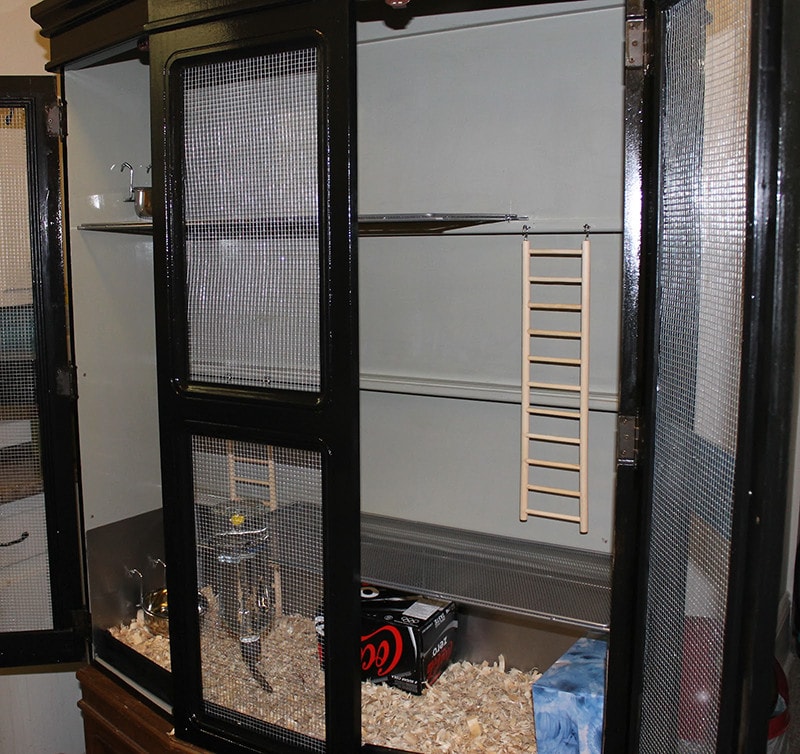
This project was made for pet rats, but it can definitely be used for ferrets as well. For this project, you could use an old china cabinet or wardrobe. They first varnished the cabinet (this is optional), then sealed the bottom with countertop sealant to make it easy to clean. If you use a china cabinet, you’ll need to replace the glass panels with wire panels to provide adequate ventilation. Be sure to find a way you can lock the doors so your curious ferret can’t venture out! For an armoire, you’ll need to replace the tall wooden doors with new panels the same size made out of wood and wire so that your ferret can have some light and air.
4. DIY Ferret Tunnel Wall Enclosure by Pet DIYs
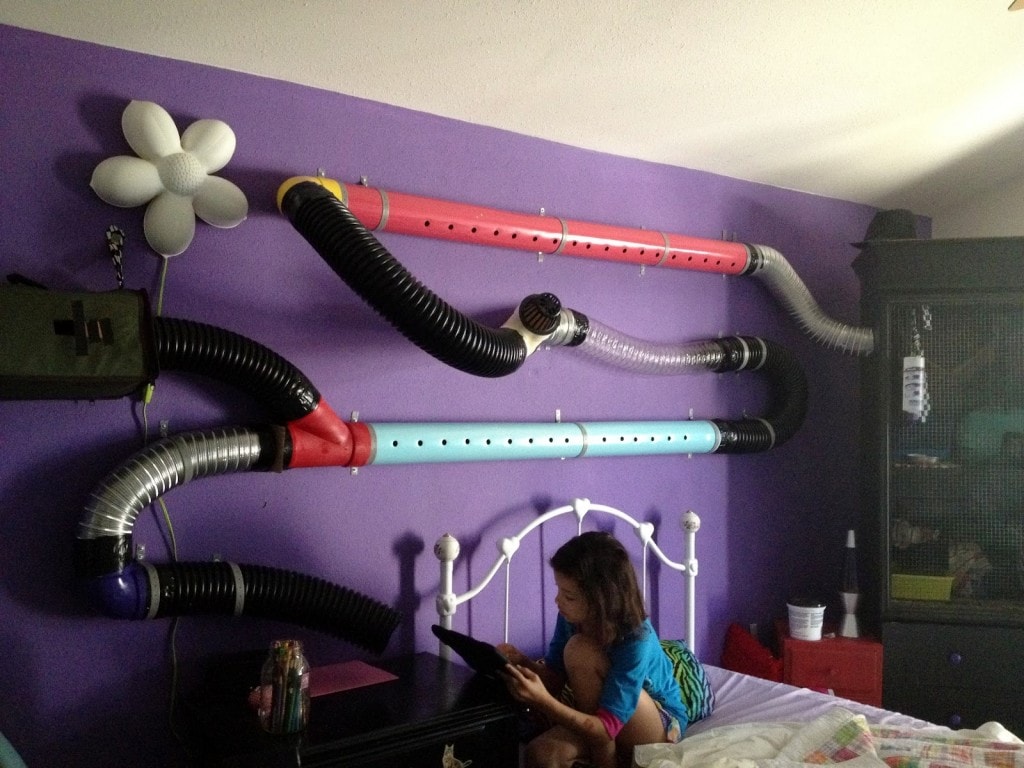
With the size of the average house consistently shrinking in the modern age, many pet parents are trying to use vertical space as a thrifty resource for their pet’s play areas. This ferret tunnel wall enclosure excellently captures this idea and gives it a sci-fi flair with the décor. The body of the tunnel is crafted out of PVC pipe, which you can paint or decorate to match the style of your house if you prefer. It can connect to your ferret’s standard cage, giving them more space to run without taking up valuable floor space.
5. Converted Cabinet Ferret Hutch by The Rabbit House

This hutch is actually designed for rabbits, but it works well for ferrets as well. An old kitchen cabinet from a remodeled house or a secondhand piece would work well for this DIY idea. If mid century modern is your style, you could even make this home from a converted TV stand or side table! We like this idea because it feels more like a piece of furniture than a pet cage, and would fit well in a living room space.
6. DIY Ferret Mansion by Christelle Siohan
This ferret mansion is made using wire cage cubes that are held together using connectors. They also connect to an existing ferret cage using zip ties, and doors are made in them with binder clips. Another cool thing about this ferret mansion is that it uses clear plastic tubing to connect the upstairs and downstairs area. It’s easy and affordable to make.
7. DIY Ferret Cage in a Closet by Tito The Raccoon
If you have multiple ferrets and an unused closet, why not turn it into a ferret cage? The YouTube video shows you how to turn a closet into a suitable enclosure for ferrets, and more detailed instructions are provided in the description. You just need to make sure to lay plastic sheeting down as a moisture barrier first, in order to avoid ruining your floors.
8. DIY Ferret Playhouse by Pet DIYs

Ferrets really do love to climb through pipes and hide in confined spaces. The PVC plastic piping in this DIY ferret playhouse is not only a great circumference that your dook can comfortably climb in, but it won’t be easily chewed. This is a playhouse, rather than a house, which means that it doesn’t necessarily have to be as big but it also means that it doesn’t have to include litter trays, beds, and food bowls unless you want it to. Even though it’s not a cage in itself, it could be placed inside a cage or used by your ferret under supervision.
How Big Should a Ferret Cage Be?
Ferrets do need plenty of room in their cage. They need to be able to comfortably turn around, climb, and get about. As they can grow up to more than a foot in length, this means that your cage should measure at least 2 x 2 x 1 ½ foot, but the more room you can provide, the better for your ferret. Making your own cage allows you to create something that perfectly fits a space you have or to use an existing piece of furniture.
What Type of Cage Is Best for a Ferret?
Ferrets are renowned for their escapology skills. The cage, therefore, needs to be secure, completely free of gaps and holes, and it should be safe. Beyond this, providing layers and opportunities to climb is a good idea so a vertical cage is better than a horizontal one.
What Do You Put in the Bottom of a Ferret Cage?
The right choice of bedding is important. Avoid wood shavings and opt for material like newspaper, a washable carpet or cloth, or wood pellets. Wood pellets are a common choice because they are readily available, easy to clean, and don’t cost a fortune.
Can Ferrets Climb?
Ferrets are very agile animals, although their energy tends to come in quite short bursts. They can run, squeeze through small gaps, and they can definitely climb. However, while they are good at climbing upwards, they are not as proficient at climbing back down again and will usually opt to take a leap of faith instead.

Final Words
Whether you have a supply of timber and chicken wire, an old entertainment center, or even a phone box that you can repurpose, there are many ways that you can make your own ferret cage. Above are DIY ferret cages that you can adapt to your own needs and that provide the space your little one needs.
See also:
- 10 Best Ferret Hammocks – Reviews & Top Picks!
- 8 DIY Ferret Playpen and Playground Plans You Can Build Today
Featured Image By: kemll, Pixabay



